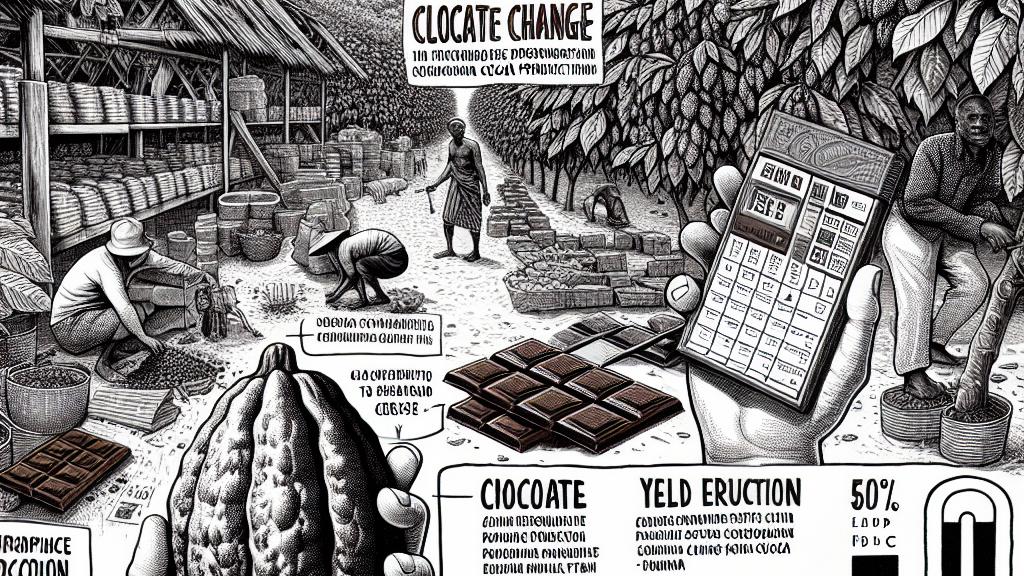Discover How to Save Cocoa Production from Climate Change
Overview
- Climate change poses a serious threat to the future of cocoa production, jeopardizing the livelihoods of millions of farmers and the global chocolate industry.
- Enhancing pollination practices can lead to significant improvements in cocoa yields, serving as a vital tool against climate effects.
- Implementing sustainable farming methods is crucial for preserving cocoa crops and ensuring a healthier environment for future generations.

The Dangers Looming Over Cocoa Production
In the vibrant tropical regions of Brazil, Ghana, and Indonesia, the future of cocoa farming is under siege from climate change. Increasing temperatures and erratic weather patterns create an unstable environment for cocoa trees. Did you know that a mere 1°C rise in temperature can reduce yields by up to 31%? This shocking figure doesn’t just threaten farmers’ livelihoods; it also poses a risk to the global chocolate market that boasts over $100 billion in annual revenue. Every time we savor a chocolate bar, we are reminded that these little details can lead to massive impacts on the industry we love.
Unlocking Potential Through Pollination
Now, let’s talk about the unsung heroes of cocoa production: tiny pollinators like midges and thrips. These insects may be small, but their role is monumental. Studies reveal that many cocoa farms suffer from inadequate pollination, causing farmers to miss out on potential yields. Imagine boosting those yields by 20% simply by enhancing pollination rates! For example, farmers in Bahia, Brazil, who embraced hand pollination practices saw a remarkable increase in both cocoa output and their profits. Protecting and boosting pollinator populations is not just a clever idea; it's a crucial strategy for sustainable production.
A Sustainable Farming Future is Within Reach
Picture cocoa farms thriving sustainably, contributing to both the economy and the environment. This is not a far-fetched dream but an attainable reality through the adoption of sustainable agricultural practices! Techniques such as maintaining organic ground cover, ensuring a diverse ecosystem, and reducing pesticide usage not only foster a welcoming environment for pollinators but also bolster soil health. For instance, research from Ghana has shown that farms utilizing integrated pest management techniques enjoy a healthier ecosystem paired with significantly better yields. This is a prime example of how enhancing biodiversity can lead to bountiful harvests and resilient farming systems.
The Time for Action is Now
As cocoa prices skyrocket above $10,000 per ton amid supply challenges, the urgency for immediate action cannot be overstated. Farmers face daunting obstacles, including climate change and diseases such as the destructive ‘Swollen shoot virus’. Supporting these farmers with fair pricing, education in sustainable practices, and access to necessary pest control can ensure their survival. By establishing conditions that protect both cocoa producers and the delicate ecosystems they depend on, we can secure a sweeter future for chocolate lovers while safeguarding the farmers who cultivate this beloved crop. Together, we can nourish both the land and the people.

Loading...